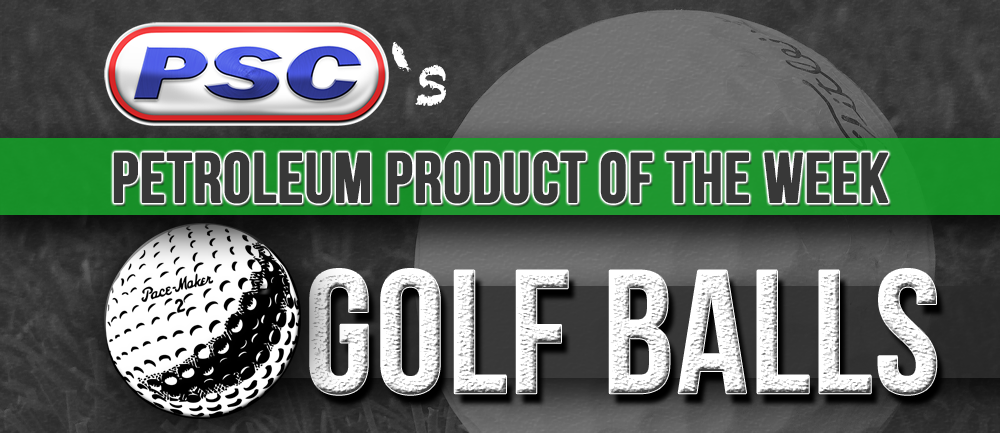Petroleum Product of the Week: How a Golf Ball is Made
By on Apr 29 2016

Out of all outdoor sports, Golf is arguably the most divisive.
While some Americans are willing to spend a majority of their paid vacation immersing themselves in the 3-day, worldwide phenomenon that is The Masters, others can't dream of spending their free time in a more unproductive way.
Though some of us at Industrial Outpost and PSC have been known to break out the clubs every now and again, our primary interest in golf balls is rooted in their production phase.

We score big time with golf balls while oil-based lubricants are used extensively during the production phase, very few people know that golf balls are made predominately from a rubber that is derived from petroleum so of course we love golf!
While some, hyper-manufactured golf balls can go for as high as $75 per dozen (don't break the bank on these until you've remedied your wide-right slice), the simple, two-layer golf balls you might find at a range are quickly made and mass-produced. The internal core of these balls are made from a petroleum-based polymer called polybutadiene.


Polybutadiene is used almost exclusively in the production of tires, but this durable rubber is the preferred rubber-type to make golf balls not because it's particularly cheap or convenient, but rather because the immense strength of the bonds contribute to the high durability of golf balls. Thanks to polybutadiene, golf balls are an accessory to our enjoyment of nature instead of volatile, shrapnel-emitting spheres of great fury!
Additionally, while a leather-skinned, feather-filled golf ball was a grand idea in the 1650s, the often mesmerizing power of Bubba Watson would seem comparably mundane, were he to opt for the featherie " (as those golf balls were once called). The natural, springy quality of polybutadiene contributes to the initial velocity of the golf ball, letting Bubba and the rest of us get the most out of our swings (personally, this often only amounts to a thrown-out back).

Polybutadiene goes through several processes before being deemed ready for its outer shell. The rubber compound is combined with other chemicals to stabilize it after, the material is pressed into sheets, rolled up, and chopped into little, marshmallow-shaped (first and last time I use that adjective) chunks known as slugs. The slugs are then pressed and heated to form the familiar round shape. After excess rubber is trimmed off, the cores are now ready for their outer shell.

The outer layer which is remarkably thin for how well it stands up to abuse is made from a thermoplastic known as ionomer resin. The melted resin is pushed through tubes and into a mold that encapsulates the rubber core. As the mold presses down on each side of the core, the ever-recognizable, dimply golf ball begins to take shape. Pushed through a few more mechanisms to refine the rough cut into a smooth outer shell, the golf ball is then stamped with a logo and number and is dropped into cases and sold by the dozen.

For the record: after the first few rounds of the season, I found it best to invest in two boxes at a time.

SOURCES






